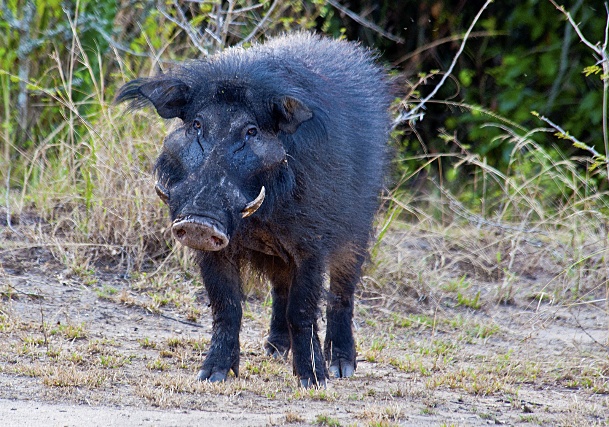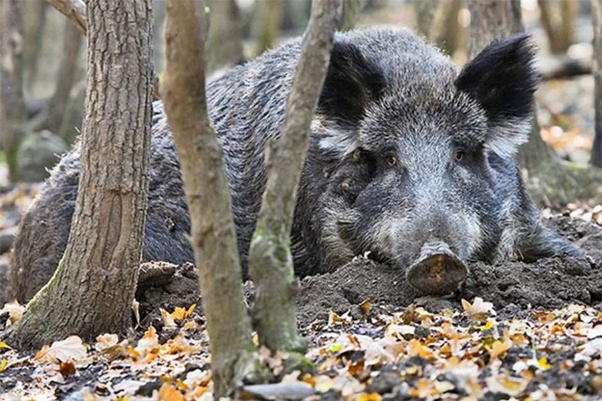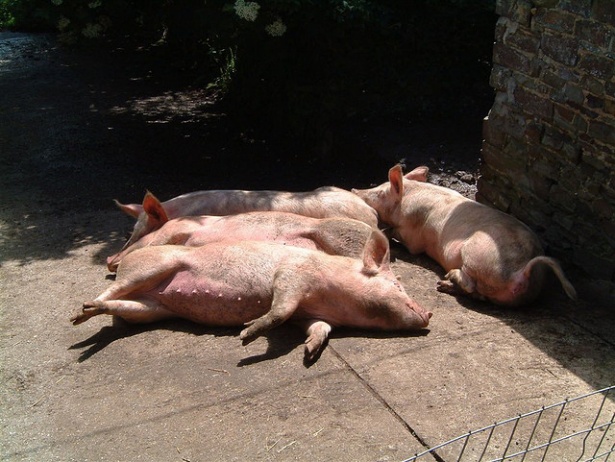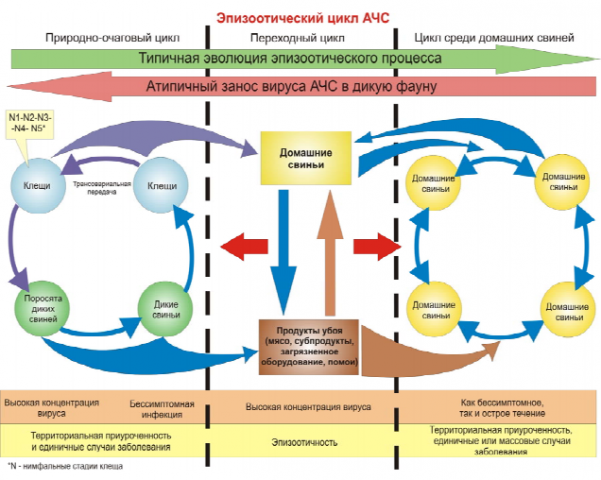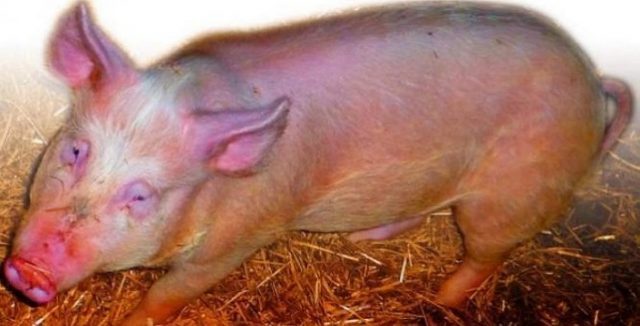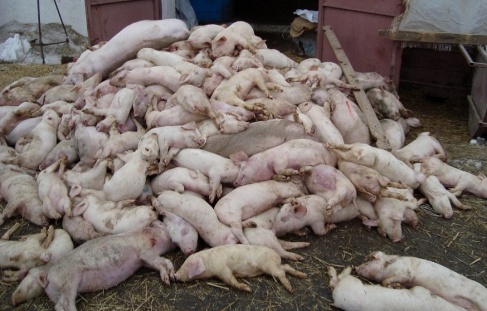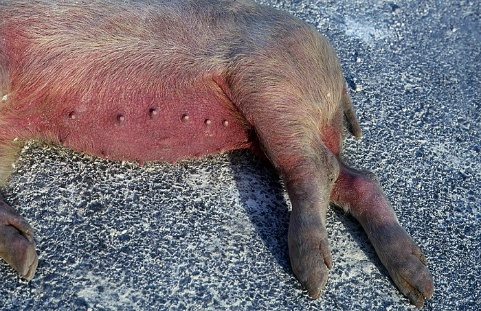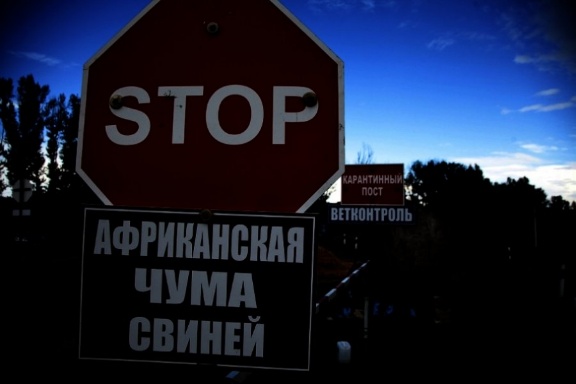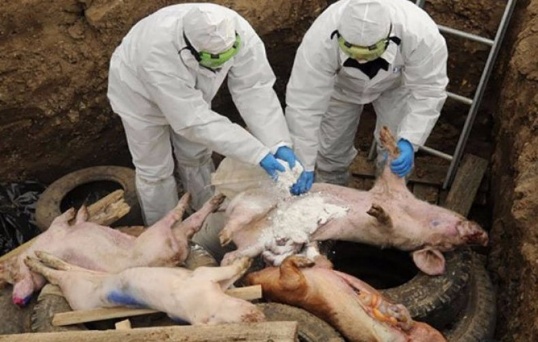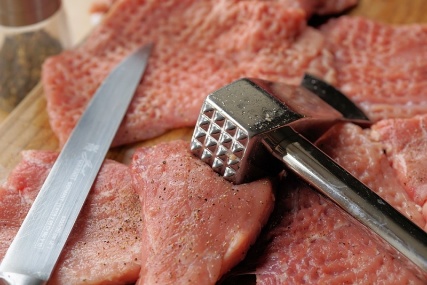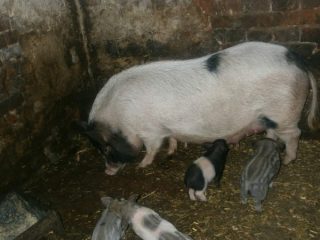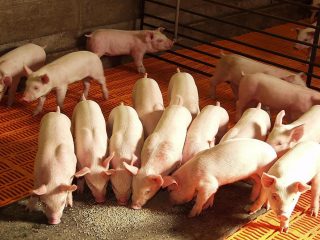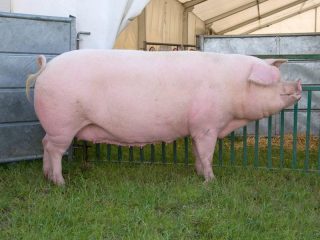Content
More recently, a new disease - African swine fever - literally decimates all private pig breeding on the vine. Due to the very high infectivity of this virus, veterinary services are forced to destroy not only sick livestock, but also all healthy pigs in the area, including wild boars.
The origin of the disease
African swine fever virus (ASF) is a natural focal disease that affects wild pigs in Africa. The ASF virus remained there until the beginning of the twentieth century, when white colonists decided to bring European domestic pigs to the African continent. "Aborigines" of Africa in the process of evolution have adapted to the virus of African swine fever. Their ASF virus persisted in a chronic form within the family herd. This virus did not bring much harm to warthogs, brush ears and large forest pigs.
Everything changed with the appearance on the African continent of the European domestic pig, descended from the wild boar. It turned out that the European representatives of the pig family have zero resistance to the ASF virus. And the virus itself has the ability to spread quickly.
The ASF virus was first isolated in 1903. And already in 1957, the victorious march of the virus across Europe began. Countries located near Africa were the first to be hit: Portugal (1957) and Spain (1960). It turned out that in European pigs, African swine fever instead of chronic takes an acute course with a 100% lethal outcome in case of clinical signs.
What is the danger of African swine fever
When viewed from the point of view of the danger of ASF virus to humans, African swine fever is perfectly safe. The meat of sick pigs can be safely eaten. But it is in this safety for people that the serious danger of the ASF virus to the economy lies. And this is due to the fact that you can spread the virus without knowing about it. The ASF virus, which is not dangerous for humans, brings colossal losses in the field of pig breeding. At the beginning of the triumphant march of the African plague virus, the following suffered from it:
- Malta (1978) - $ 29.5 million
- Dominican Republic (1978-1979) - about $ 60 million;
- Cote d'Ivoire (1996) - $ 32 million
In the Maltese archipelago, the total destruction of the pig herd was carried out, since due to the size of the islands it was not possible to introduce quarantine zones. The result of the epizootic was a ban on keeping pigs in private homes. The fine for each individual found is 5 thousand euros. Pig breeding is carried out only by entrepreneurs on specially equipped farms.
Propagation paths
In the wild, the ASF virus is spread by the blood-sucking ticks of the ornithodoros species and by the African wild pigs themselves. Due to their resistance to the virus, African wild pigs can act as carriers when in contact with pets. "Africans" can be sick for several months, but they release ASF virus into the environment only 30 days after infection. After 2 months after infection, the active ASF virus is found only in the lymph nodes.And infection with the causative agent of African swine fever can occur only through direct contact of a sick animal with a healthy one. Or by transmission of the virus by ticks.
In the conditions of pig farms and private farms, everything happens differently. In fecal contaminated soil, the virus remains active for more than 100 days. The same applies directly to manure and chilled meat. In traditional pork products - ham and corned beef - the virus is active for up to 300 days. In frozen meat, it lasts up to 15 years.
The virus is released into the environment with feces and mucus from the eyes, mouth and nose of sick pigs. On walls, inventory, boards and other things, the virus remains active for up to 180 days.
Healthy pigs become infected by contact with infected animals and their carcasses. Also, the virus is transmitted through feed (it is considered especially beneficial to feed pigs with waste from public catering establishments), water, transport, inventory. If all this is contaminated with feces of plague pigs, the healthy is guaranteed infection.
Since the virus is not dangerous to humans, when signs of African plague appear, it is more profitable not to notify the veterinary service, but to quickly slaughter pigs and sell meat and lard. This is precisely the real danger of the disease. It is not known where the food will end up after the sale and where the plague will next break out after feeding a half-eaten piece of contaminated salted lard to pigs.
ASF symptoms
The signs of African fever and erysipelas in pigs are very similar and laboratory tests are required for accurate diagnosis. This is another reason why the elimination of ASF foci is very difficult. Proving to a pig breeder that his animals have ASF, and not erysipelas, is very problematic.
For the same reason, there are no videos showing signs of African swine fever. No one wants to draw the attention of the veterinary service to their farm. You can only find a video with a verbal story about the signs of ASF in pigs. One of these videos is shown below.
As with erysipelas, the form of ASF is:
- lightning fast (super-sharp). The development of the disease occurs very quickly, without the appearance of external signs. Animals die in 1-2 days;
- sharp. Temperature 42 ° C, refusal to feed, paralysis of the hind legs, vomiting, shortness of breath. Difference from erysipelas: bloody diarrhea, cough, purulent discharge not only from the eyes, but also from the nose. Red spots appear on the skin. Before death, falling into a coma;
- subacute. Symptoms are similar to those in the acute form, but are milder. Death occurs on the 15-20th day. Sometimes a pig recovers, remaining a virus carrier for the rest of its life;
- chronic. Differs in asymptomatic course. It is very rare in domestic pigs. This form is mainly observed in African wild pigs. An animal with a chronic form is a very dangerous carrier of the disease.
When comparing the symptoms of swine erysipelas and ASF, it can be seen that the symptoms of these two diseases differ little from each other. Photos of pigs that died from African plague also differ little from images of pigs with erysipelas. For this reason, laboratory tests are needed to accurately diagnose the disease.
The photo shows signs of African swine fever. Or maybe not ASF, but classical. You can't figure it out without microbiological research.
Laboratory diagnostics of African swine fever
ASF must be differentiated from erysipelas and classical swine fever, therefore, the diagnosis is made in a comprehensive manner based on several factors at once:
- epizootological. If there is an unfavorable ASF situation in the area, animals are more likely to get sick with it;
- clinical. Symptoms of the disease;
- laboratory research;
- pathological data;
- bioassays.
The most reliable way to diagnose ASF is to use several methods simultaneously: hemadsorption reaction, PCR diagnostics, the method of fluorescent bodies and a bioassay on piglets immune to classical plague.
A highly virulent virus is easy to diagnose, since in this case the death rate among sick animals is 100%. Less virulent strains of the virus are more difficult to identify. An autopsy should be suspected of causing the pathological changes characteristic of African swine fever:
- greatly enlarged spleen of dark red color. May be nearly black due to multiple hemorrhages;
- enlarged 2-4 times the lymph nodes of the liver and stomach;
- similarly enlarged hemorrhagic lymph nodes of the kidneys;
- numerous hemorrhages in the epidermis (red spots on the skin), serous and mucous membranes
- serous exudate in the abdominal and chest cavities. May be mixed with fibrin and blood
- pulmonary edema.
Genotyping of African swine fever is not performed during diagnosis. This is being done by other scientists using wild African livestock.
Instructions for the elimination of African swine fever
Veterinary services are taking measures to eradicate the outbreak of African swine fever. According to the international classification of African swine fever, hazard class A is assigned. All that is required from a pig breeder is to notify the service about the disease of animals. Further, the veterinary service acts according to the official instructions, according to which quarantine is introduced in the area with the total slaughter of all pigs and posts on the roads in order to prevent the possible export of infected pork to other areas.
The entire herd on the farm where ASF is detected is slaughtered by the bloodless method and buried at a depth of at least 3 m, sprinkled with lime, or burned. The entire territory and buildings are thoroughly disinfected. It will not be possible to keep any animals at this place for another year. Pigs cannot be kept for several years.
All piglets are removed and destroyed from the population within a radius of several kilometers. A ban on keeping pigs is introduced.
It should be borne in mind that some porous materials do not lend themselves to complete disinfection and the virus can exist there for a long time. Materials undesirable for building a pigsty:
- wood;
- brick;
- foam blocks;
- expanded clay concrete blocks;
- adobe brick.
In some cases, it is easier for the veterinary service to burn a building than to disinfect it.
Prevention of ASF
To ensure that ASF is prevented from occurring in the household, certain rules must be followed. In pig-breeding complexes, these rules are elevated to the rank of law and it is easier to follow them there than in a private backyard. After all, a pig-breeding complex is a place of work, not a place of residence. Nevertheless, unsanitary conditions cannot be raised in private household plots.
Rules for the complex:
- do not allow free walking of animals;
- keep piglets indoors;
- regularly clean and disinfect places of detention;
- use replacement clothes and separate equipment for the care of pigs;
- buy food of industrial origin or boil food waste for at least 3 hours;
- exclude the appearance of unauthorized persons;
- do not buy live pigs without a veterinary certificate;
- move animals and pork without the permission of the state veterinary service;
- register livestock with local administrations;
- not to slaughter animals without pre-slaughter inspection and the sale of pork without a sanitary examination of meat;
- not to buy pork "off-hand" in places not specified for trade;
- not to interfere with the veterinary inspection and vaccination of the pig herd;
- to dispose of corpses and biowaste only in places designated by the local administration;
- not to process for sale the meat of forcibly slaughtered and fallen animals;
- in the habitats of wild boars, do not use water from streams and calm rivers for watering animals.
If you remember how the population observes all these rules, you get about the same picture as in the video below.
Is African swine fever dangerous for humans?
From a biological point of view, it is completely safe. It is very dangerous for the nerves and the pig owner's wallet. Sometimes ASF is also dangerous for the freedom of the culprit of an ASF outbreak, since failure to comply with the above rules can lead to criminal liability.
Conclusion
Before you get a pig, you need to check with the veterinary service about the epidemiological situation in the area and whether it is possible to get pigs. And you must always be prepared for the fact that at any time an ASF center may appear in the area, due to which the animal will be destroyed.
